Seasons – Fall 2015
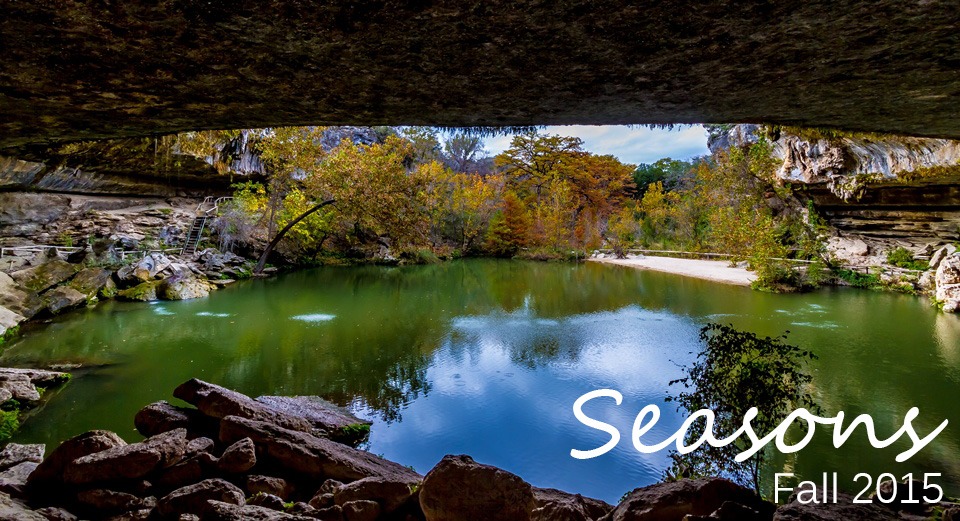
From the Plateau Land & Wildlife Management Team,
Another Texas summer has come and gone and although it may still feel like summer, we can look back and say this was not a typical Texas summer. It was only months ago that El Nino came down on Texas and gave us a state record rainfall- rainfall that was needed for plants and wildlife alike. But since then, Texas has returned to the hot summer it’s known for. Your land may still be recovering from rain and/or heat, which is why fall can be so important for focusing on rejuvenating your land.
Autumn brings a refreshing eagerness to reconnect with our land. Whether it’s through deer and quail hunting or simply enjoying the cooler weather and changing foliage. Throughout this issue of Seasons, we will highlight many opportunities to improve and enjoy your land while achieving compliance activities before the year’s end. Check out our Wildlife Management Fall Activities Checklist to find out which activities are most important and effective during the fall, and then skip down to read about Chronic Wasting Disease (CWD) that has affected some wildlife throughout central Texas.
Later this month and throughout October, Plateau will be preparing for fall by providing our clients, friends, and colleagues plenty of opportunities to learn more about Wildlife Management Tax Valuation (WMV). Plateau’s fall seminar schedule is full of stops and you’re invited to come out and join us in a city near you. If you can’t make it, don’t worry, we’ll also have webinars covering the same material throughout the month of October. You can find full schedules of both events on our website.
We hope this issue of Seasons will help you get ready for fall activities, celebrate the cooler weather and even begin preparing for the holidays. As always, if there’s any way that Plateau can help you protect, enhance or better enjoy your land just give us a call. We’ll be here.
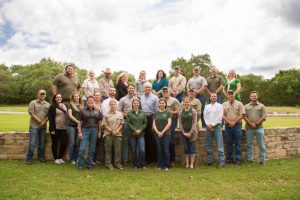 Until next season and Seasons,
Until next season and Seasons,
The Plateau Team
Table of Contents
Chronic Wasting Disease In Texas
The Plateau Service Agreement; Your Virtual Land Manager
Fall Wildlife Management Activities Checklist
Plateau Seminars & Webinars This Fall
Rural Land Pricing Strategies Made Easy
The Importance of Updating Your Estate Plan
Plateau Land Group Featured Listing
Chronic Wasting Disease In Texas
By Shane Kiefer, Director of Ecological Services & Certified Wildlife Biologist
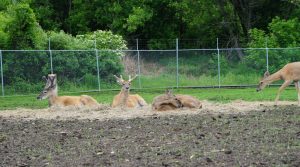 There have been several meetings, many hours spent, lots of articles written, some arguments, and plenty of comments made about Chronic Wasting Disease (CWD) since the July 1st announcement of its detection in a captive Medina County white-tailed deer herd. This development intersects with multiple, larger issues and involves real and potential economic impacts to the state and individuals. I will not attempt to cover every issue in this article. After listening to hours of audio and reading extensively, I spent a fair amount of time thinking about what might be most important for Plateau landowners to get from this article. What I decided on was context. It is often hard to place complex issues like this in context with so much information available. I hope this provides some as you read and think about this topic.
There have been several meetings, many hours spent, lots of articles written, some arguments, and plenty of comments made about Chronic Wasting Disease (CWD) since the July 1st announcement of its detection in a captive Medina County white-tailed deer herd. This development intersects with multiple, larger issues and involves real and potential economic impacts to the state and individuals. I will not attempt to cover every issue in this article. After listening to hours of audio and reading extensively, I spent a fair amount of time thinking about what might be most important for Plateau landowners to get from this article. What I decided on was context. It is often hard to place complex issues like this in context with so much information available. I hope this provides some as you read and think about this topic.
The Brief
A total of four animals from the Medina County herd have tested positive for CWD. On September 16th, the Texas Parks and Wildlife Department (TPWD) and the Texas Animal Health Commission (TAHC) announced that a captive deer in Lavaca County that is linked to the Medina County facility also tested positive. TPWD has regulatory authority over all white-tailed deer in Texas. Both TPWD and TAHC share regulatory responsibility for captive deer held under the authority of Deer Breeder Permits. While it may be challenged in court soon, captive white-tailed deer are not private property in Texas so they remain in the public trust and may only be possessed under a valid permit, which grants limited rights related to possession, animal husbandry, and transfer of animals. The investigation is ongoing, the CWD Management Plan is being utilized, and emergency rules regarding disease testing and movement of captive deer have been issued by TPWD and TAHC. While TPWD and TAHC are working diligently, we still do not know how CWD got into the Texas Mountain Ranch herd or how widespread it may be across the state.
Some Things We Know
This is not currently an epidemic and landowners and hunters should not be panicking. TPWD has been testing wild deer and collecting test results from permitted deer breeders since 2002 as part of a monitoring effort to detect CWD as early as possible. After more than 30,000 tests on wild deer and more than 12,000 breeder-submitted tests, this is the first detection in a captive herd and the first detection in a white-tailed deer in Texas. CWD is present in wild mule deer in Texas – in the Hueco Mountains in Hudspeth and El Paso Counties. It was detected there in 2012 and has been closely monitored ever since. In that case, it most likely emerged from just across the border in New Mexico, where CWD is entrenched in wild mule deer herds.
Only three genera of deer – White-tailed deer/mule deer (Odocoileus), elk/red deer and (possibly) sika deer (Cervus), and moose (Alces), are considered CWD susceptible. Other exotic cervids – Axis, fallow, etc. – are in different genera and are not considered susceptible to CWD transmission, as there is no evidence they can contract the disease. Remember, it’s been around a long time and there has been plenty of opportunity for it to crossover to these species if it could.
No state has eliminated CWD from its borders once detected, other than possibly New York. CWD has been known since the 1960s in Colorado. Since then it has been identified in 22 other states and 2 Canadian provinces. However, CWD has not wiped out deer herds in any of the areas where it has been detected. It is not a fast-moving, fast-killing disease. It may very likely have significant demographic effects when prevalence rates rise in a population by altering the age structure of the herd. It is almost certainly impossible to completely eliminate CWD from the environment once it is established. The infectious protein is shed by infected animals in their blood, urine, feces, and saliva. It can persist in the soil for an unknown number of years and even gets taken up by plants. It can also be transported to new areas by infected tissue from carcasses, especially central nervous system tissue (brain and spinal cord). This makes managing CWD substantially different than a disease that is only transmitted animal-to-animal.
There is no evidence that CWD is a human health threat despite decades of human consumption of infected deer. Recent experiments in mouse models suggest that humans are entirely incapable of contracting the disease. There is also no evidence of natural transmission to domestic animals.
To confirm the absence of the disease with the most certainty, you have to sample part of the brain and lymph nodes, which requires a dead animal. The only officially approved test for CWD in white-tailed deer at this time is the post-mortem test. Live tests are showing promise and are within a few percentage points of certainty of the post-mortem test, but they are still not quite as good and would require different protocols and entail additional risk over the current standard.
What Does This New Discovery Mean for Texas?
This recent detection is different than the West Texas discovery in 2012. First, eradication of CWD from a wild population is likely impossible, even with aggressive culling operations, which have been tried unsuccessfully in other states. Second, you cannot control movements of wild animals, BUT those wild animals are much more restricted in time and space than captive-bred animals that may be moved long distances in just a few hours. One of the most noteworthy facts about the Medina County case is the geographic range of sites associated with the infected herd. In the five years prior to the detection (the accepted incubation time and possible length of time CWD has been in the facility), the Medina County facility received 126 deer from 30 facilities in 30 different counties in Texas and sent out 835 deer to 147 facilities in 66 different counties and 2 Mexican states. What is also unique about Texas is that we are the only state that permits release of captive deer into wild herds. While containing captive deer has not necessarily prevented its spread to wild populations in other states, the active movement and release of potentially exposed animals across the state could rapidly expand the geographic extent of CWD in captive and wild herds in Texas. This would make containing the threat nearly impossible and is the reason that any exposed deer and deer herds should be located with urgency.
The good news is the breeder kept detailed records and TPWD’s record-keeping system (TWIMS) has allowed them to quickly identify connected sites and animals. The TAHC is attempting to track down all the potentially exposed animals for testing. It is unlikely they will all be found and available for testing, considering the 5-year time span, but so far at least 254 animals connected to the facility have been tested with one positive from Lavaca County. Whether any given facility will be able to move deer this fall will depend, first and foremost, on whether it has any connection to the Medina County site. Those 835 deer transported off-site over the last 5 years are the highest risk animals and every effort must be made to identify and test them. This is the most effective approach to contain CWD as the Lavaca County detection demonstrates.
The CWD Management Plan was formulated in 2012 with input from a wide variety of stakeholders. It has provided the basis for the actions taken since the detection was made in June. It is too early to know whether the implementation of the plan will prevent CWD from escaping containment. The fact is it may have already escaped regardless of the response. Given its persistence in the environment and long incubation time, we may not know for years how widespread it is. Because a CWD plan was in place and because of active monitoring by deer breeders, voluntary submission of deer by hunters, and the efforts of TPWD, there is hopefully still a chance to prevent or limit CWDs spread to wild populations of white-tailed deer across most of Texas.
What Landowners Need to Know
This disease and the CWD Management Plan require patience. Texas is not the first state to deal with CWD and there are many lessons to be learned from other places. One of those lessons is that once it has spread, the focus will have to shift to CWD management rather than CWD eradication. Another is that if it does become established, it will not mean the end of deer hunting in Texas. Over the long term the impacts may even be minimal, but it will have very real impacts on rural land and landowners, especially where land use is heavily linked with deer hunting. Despite what we know, there are many things we do not, and perception is a powerful thing. The presence of CWD in an area may discourage some hunters (or potential hunters) from the sport. There is also a very real chance that potential land buyers could be hesitant to purchase in an area where CWD is established. Coleman County, where I’ve hunted for 25 years, is one of the counties that received deer linked to this herd. If it turns out that CWD becomes established there, it won’t stop me from enjoying my favorite pastime, but it may mean some changes to how I’m used to doing things (carcass movement restrictions, for example). It is too early to say exactly what those changes will be, but Plateau will be paying attention and keeping you informed.
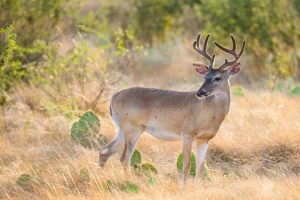 TPWD is considering how to approach testing of wild animals around the current (and possible future) detection site(s), much like they have done in West Texas. Those of you in northern Medina County, Lavaca County, and possibly surrounding counties may be important participants in future monitoring. The extent and intensity will likely depend on what the continuing investigation reveals about the infected herd(s).
TPWD is considering how to approach testing of wild animals around the current (and possible future) detection site(s), much like they have done in West Texas. Those of you in northern Medina County, Lavaca County, and possibly surrounding counties may be important participants in future monitoring. The extent and intensity will likely depend on what the continuing investigation reveals about the infected herd(s).
This disease is density-dependent. In other words, the rate of spread and prevalence of the disease, especially early on, is related to how many animals are present on the land and their concentration. Deer overpopulation is one of the primary concerns we try to address in working with rural landowners. It has a wide variety of negative impacts to habitats and other wildlife, including the deer themselves. Disease management is yet another reason to consider deer population issues in your management plan. My guess is that TPWD may try to leverage the Managed Lands Deer Permit (MLDP) Program to increase sampling for CWD in target areas.
Feeding deer can have benefits in a well-managed herd, but feeding does unnaturally concentrate deer, and can increase the likelihood of disease transmission, including CWD. This is yet another reason not to feed deer in the absence of population management. Population management must also consider exotic animals. While most of our common exotics are not susceptible to CWD, their presence puts pressure on natural food resources and could result in a greater reliance on supplemental food resources by susceptible species, thus concentrating them.
Plateau knows as well as anyone that most conservation happens in Texas thanks to the efforts of private landowners like you. Our stated company mission is to help “owners of rural land to increase value by conserving, restoring and/or improving their property’s native wildlife and habitats through science-based solutions and exceptional customer service.” Our focus is your land and the native wildlife that inhabits it. We want to hear to your concerns and opinions and we are here to help you interpret how CWD may impact you personally. Please let us know whenever we can be of service.
For more information and links see: tpwd.texas.gov/huntwild/wild/diseases/cwd/
Back to TopBack to Top
The Plateau Service Agreement; Your Virtual Land Manager
By Kameron Bain, Business Development Manager
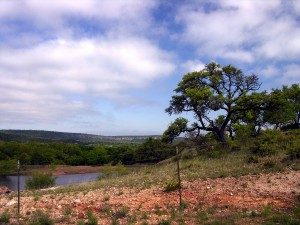 Here at Plateau the dawn of Fall marks the beginning of Plateau’s Wildlife Management Service Agreement Season. Each October our team begins the process of reviewing properties and preparing the upcoming year’s service agreement proposals.
Here at Plateau the dawn of Fall marks the beginning of Plateau’s Wildlife Management Service Agreement Season. Each October our team begins the process of reviewing properties and preparing the upcoming year’s service agreement proposals.
Hill Country ViewOver 250 landowners made the decision to take advantage of having Plateau oversee and take care of their wildlife management activities each year. At Plateau we have a team of professionals who consistently has eyes on your property: from a dedicated team of Wildlife Biologists, to Account Managers, to our wildlife management services technicians whose extensive knowledge and experience of your land is almost like having your very own Ranch Manager. All of these individuals are monitoring, installing, and reviewing paperwork to ensure your activities are up to date and in compliance with your County Appraisal District’s requirements. With a Plateau Service Agreement, you have a virtual land manager at a significantly lower cost to you.
Here are just a few of the benefits Plateau Service Agreement Landowners enjoy:
- Annual Review: As part of the renewal process the Plateau team reviews your property and all the documentation collected throughout the year to ensure that you are continuing to meet the minimum intensity requirements and to make recommendations on improvements or changes to ensure compliance.
- Documentation: Not only are your activities being covered but also well documented by our team of Wildlife Management Services Technicians and Biologists. When the CAD asks for your annual report, you will be prepared.
- Customized for your needs: Whether your goal is compliance or becoming a better land steward we can customize the agreement to suit your goals.
- Customized for your budget: We will work with you to create an agreement that works for your property as well as your wallet.
- Ease and Peace of Mind: Plateau will take care of your activities, giving you more time enjoy your property and rest easy, knowing your valuation is being taken care of.
Back to TopBack to Top
Fall Wildlife Management Activities Checklist
By Kameron Bain
And with a blink of an eye we are here again. Fall, the last 3 months of the year. It is time to begin wrapping up your wildlife management activities for the year and to double check that you are meeting all your requirements. It is also essential that you make sure you have all your documentation so you are fully prepared when your Central Appraisal District requests a 2015 Annual Report. There are several key activities to be done in the fall, and if you find that you have fallen behind there are plenty of activity options to choose from.
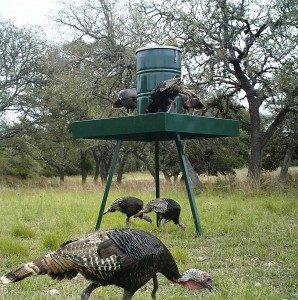
- Wintering and Resident Bird Survey– Start November 15
- Wildlife Management Activities Check-up
- Remote Camera Wildlife Survey
- Imported Red Fire Ant Control
- Brush Management
- Re-seeding wildflowers and native grasses
- Strip mowing and Discing – Start November 1
- Chemical control of huisache and prickly pear
- Cut-stump herbicide treatments
- Tree and shrub planting – Start late Fall/Winter
- Brush Pile Construction
- Product Installs- Feeders, Water Tables, and Shelter
Back to TopBack to Top
Plateau Seminars & Webinars This Fall
Wildlife Management Seminars
Every fall, Plateau Account Managers travel around the great state of Texas to educate folks about the many benefits of Wildlife Management Tax Valuation (WMV). These seminars are free and open to anyone interested in learning more about WMV. During each seminar Plateau Account Managers will cover:
- Overview of Wildlife Management Tax Valuation
- The 7 wildlife management activity categories
- Traditional Ag vs. Wildlife, is it right for you?
- State & County requirements
- Concrete answers to any concerns you may have
- How Plateau can help
Though some of you may already be under a WMV, these seminars will also benefit you and anyone who owns rural land in Texas, including those who are currently in Ag. To learn more about dates, times and locations of these seminars, visit our webpage.
If you can’t make it to a seminar, we will be hosting a Wildlife Management webinar three times throughout October covering the same information covered in the seminar. You will be able to watch the presentation and ask any questions you may have. To register for any of these webinars visit our webpage.
Back to TopBack to Top
Rural Land Pricing Strategies Made Easy
By Craig Bowen, Managing Partner, Plateau Land Group, Realtor®
You have decided to sell your rural property. It may be a home on acreage, an equestrian estate, a recreational treasure…rural land comes in many shapes and sizes. What is consistent in this market is that an owner usually has deep ties to his property. Maybe he grew up farming it with his father or learned how to ride a horse in the old round pen behind the barn. Maybe she learned to hunt with her grandfather, or tended the chickens or garden for her family as a child.
No matter the history of the ownership or the reason for the sale, there is usually a lot of emotion involved in selling Texas land. Perhaps the most difficult aspect of the sale (for the Seller, and oftentimes his or her Realtor®) is separating the emotion and perceived value from the methodical pricing of the property. It is a harsh but real truth that most buyers do not carry the same emotional attachment to a property as the seller, and thus it must be priced according to what it is worth in the current market, not what the seller “has in it” from an emotional or perceived value perspective. Pricing a property correctly can mean a seamless transaction with a win-win for the buyer and seller, and, unfortunately, bad pricing can lead to seller’s remorse about leaving money on the table (priced too low) or unacceptably long sales cycles (priced too high).
Indeed, the pricing strategy must be based on empirical data which a savvy Realtor® can glean from the market, and then apply to the subject property. There are several ways to gather such data, from basic knowledge of the area and rural land in general, or looking at comparable properties which have sold in a given area over time, to simply hiring an appraisal and using the appraisal number as the list price.
The Sales Comparison Approach (SCA) is the most popular pricing approach in most Texas markets because of the high percentage of recreational or otherwise non-income-producing property. The SCA takes into account recent comparable sales in the area, and then draws a comparison between those sales and the subject property. The price of the property is then determined by how closely each comparable compares to or “matches” the subject property.
Location, size, and human use amenities such as houses, barns, and road systems are obvious factors to consider when making property comparisons within the SCA. Other factors like type and quality of surface and well water, type and quality of fencing, and ecological factors such as plant diversity and topography can also weigh heavily in the Sales Comparison Approach.
Market trend data such as Active Days on Market (ADOM) and actual sales price as compared to list price should be considered, though a trained Realtor® or appraiser will have easier access to this information than most sellers. The top three to five most comparable properties should be assigned a “weighted value,” a number from .01-.99 based on similarity to the subject property, and these weights are then multiplied by the sales price for the respective comparables. Adding these three to five solutions together can then give a realtor a rough suggested list price. It should be noted that assigning these weighted values is a subjective process, so large initial data sets and lots of practice are necessary to achieve the best results.
A typical formula might look something like this:
Comparable A = $4,500 / acre, weighted at .15 similarity value = $675 / acre weighted value
Comparable B = $6,000 / acre, weighted at .35 similarity value = $2,100 / acre weighted value
Comparable C = $7,000 / acre, weighted at .25 similarity value = $1,750 / acre weighted value
Comparable D = $6,500 / acre, weighted at .25 similarity value = $1,625 / acre weighted value
= 1 = $6,150 estimated sales price
If the Comparables used in the SCA came from sold comparables, that is, the properties have already closed and the data is from sales price and not list price, then the SCA solution is a best guess for a sales price. (If the data came from much less accurate active market comparables, then the SCA solution is a best guess for a list price). After evaluating this price against several comparables, a Realtor® can make an educated decision in advising his or her client to list the property very close to this sales price in a weak market or for a shorter sales cycle (less Active Days on Market), or list the property somewhat higher in a strong market or when timeline to sell is not critical. The Realtor® can compare prices throughout the discussion to the Active Days on Market data, even estimating ADOM based on similarly-priced properties geographically near the subject property.
Even with a good data set and experience pricing rural land, significant inferences must sometimes be made to reach a sensible list price. For example, if most of the comparables are raw land sales and the subject features luxury home, some value must be given to the home and adjustments made to the pricing strategy. Specialty properties such as equestrian estates, managed hunting ranches, and very large or very small size must be priced according to the market demand for that type of property in that specific geographical area, not just by adding the land value and some factor of improvement value (improvements are hardly ever valued at replacement cost).
Pricing is about half art and half science. It is a team effort between a Realtor® and a seller. It takes understanding about the seller’s emotions from the Realtor®, and an acceptance of a certain level of empiricism and methodology from his client. When coupled with a great marketing plan, pricing a property just right is the absolute best sales tool there is, and the Sales Comparison Approach is a valuable method to get the price just right.
Back to TopBack to Top
The Importance of Updating Your Estate Plan
By Margaret Menicucci, Attorney at Braun & Gresham, PLLC.
The year 2000 was not that long ago – – right? It least it feels that way to me. But, for most of us, many changes have occurred – both expected and unexpected. Imagine a family with two elementary school children in 2000. Their estate plan likely would focus on providing for those children in the event a parent died. Trusts are created; guardians appointed. Now, in 2015, those children are young adults, hopefully working or studying. The grandparents who were great executor, guardian, and trustee candidates may have passed away or could find the task overwhelming. The family’s assets have changed and we certainly know that Texas land values- rural and urban – have increased dramatically. That 2000 estate plan may not serve the couple well.
Imagine also a couple that became empty-nesters in 2000. Their children were launched! Their retirement planning was well underway. By 2015, with retirement in full swing, grandchildren of all sizes fill the house at holidays. Special needs may have arisen for a part of the family or for the couple. An allocation of assets that seemed so simple fifteen years ago, may need more careful consideration, balancing gifts to heirs and considering trusts for long-term management. Disability planning feels more critical, requiring powers of attorney and Directives to Physicians (Living Wills).
We like to say that one purpose of estate planning is to “give what we own to who we want, the way we want them to receive it, and when we want them to receive it.” Changes in the landscape of our lives requires us to re-evaluate whether the estate planning tools initially chosen make sense now. At Braun & Gresham, we want to ensure that all of our clients have the estate plan that best suits their needs. Contact the Braun & Gresham Estate Planning team of Margaret Menicucci and Thomas Hall to learn more.
For another perspective on updating estate plans, see Eleanor Blaney’s Wall Street Journal Blog on Why Estate Planning Can’t be “Once and Done.”
Why Estate Planning Can’t Be ‘Once and Done’
ELEANOR BLAYNEY: Let’s face it. Estate planning is a dreary exercise. Few people wake up on a beautiful Saturday morning, smile into the bathroom mirror and announce: “Today’s the day to plan for my demise…”
Because drawing up wills and trusts–and naming beneficiaries, guardians, executors and trustees—is so not-fun, most people are tremendously relieved once these tasks are done. So much so, they are apt to put those documents and binders somewhere on the shelf and get back to the more enjoyable aspects of living. They assume that everything is taken care of. Like a smallpox vaccination for the young, and a shingles shot for the old, an estate plan is something you get once and then forget about.
But therein lies a big mistake. As long as people keep living and their world keeps changing, there is always the possibility that the plan they put in place no longer works as intended. Ironically, however, there are those who use the inevitability of change as reason to avoid doing their estate planning in the first place. Ever thought to yourself, “I’ll write a will once I’m married/done having kids/divorced…?”
To emphasize that estate planning cannot be a “once and done” deal, consider the impact of the following events:
– The federal estate-tax exemption changes: The allowable amount that can be passed tax-free to non-spousal beneficiaries has increased significantly, from $1.5 million in 2005 to $5.4 million in 2015. Without making an appropriate revision to an older estate plan, a surviving spouse may be effectively disinherited. Many married couples use two trusts as part of their planning–one for their spouse, and a second for other beneficiaries–and direct that the second trust be funded first, up to the exemption amount. But with a later increase in the exemption, that second trust may effectively consume all the decedent’s estate, leaving nothing for the spouse.
– You move to a different state: Crossing state borders can have estate-tax implications that may require revisions to your estate plan. Particularly in cases where you move to a state that has a lower estate-tax threshold than does the federal government, the usual two trust structures for many married couples may no longer be sufficient to minimize or eliminate taxes on the overall marital estate. A third trust may be needed in the estate plan.
– Your life stays the same, but that of your beneficiaries doesn’t: Consider the example where you named your children as beneficiaries in equal shares on your retirement plan back when they were just kids. Now they’re adults with their own kids, and one of your children dies. If your original beneficiary designation hasn’t been revised, there is potential to completely disinherit one set of grandchildren.
These are just a few of many examples where an estate-planning “booster shot” is needed. Life has a habit of changing, and so must the best laid plans. But it’s hard to stay alert to all the “triggers” for making plan changes. A better solution is to review the plan every year, ideally with a competent legal and financial professional.
Eleanor Blayney (@EleanorBlayney) is consumer advocate of the Certified Financial Planner Board of Standards.
blogs.wsj.com/briefly/2015/01/13/common-estate-planning-mistakes-at-a-glance/
Back to TopBack to Top
Plateau Land Group Featured Listing
One-Of-A-Kind Oasis in Comal County
 A true oasis hidden in the trees, only 2 miles from Canyon Lake. 3/2 home, professionally designed ponds, flowing creek, waterfalls, stunning views, and towering bald cypress and sycamore trees. The right vision could turn this property into a boutique senior or veteran community, a pristine conservation easement property upon which to build a family legacy or a beautiful homestead for the whole family.
A true oasis hidden in the trees, only 2 miles from Canyon Lake. 3/2 home, professionally designed ponds, flowing creek, waterfalls, stunning views, and towering bald cypress and sycamore trees. The right vision could turn this property into a boutique senior or veteran community, a pristine conservation easement property upon which to build a family legacy or a beautiful homestead for the whole family.
View all of Plateau Land Group’s listings.
Back to TopBack to Top


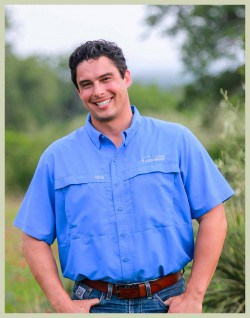






Sorry, the comment form is closed at this time.